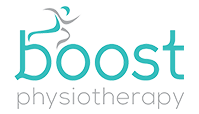
5 Physiotherapy Treatments That Everyone Should Know
Physiotherapy, also known as physical therapy, is a practice by a physiotherapist that promotes, maintains, and aids a person’s overall physical health. People can see a physical therapist for many reasons, ranging from aging to an athlete rehabbing an injury. As a result, physical therapists utilize a wide range of Physiotherapy Treatments.
Like any other health practice, treatment ranges depending on a person’s health, age, medical history, injury, ailment, and much more. Thus, it becomes especially critical for people and physical therapists to understand physiotherapy and its various treatments.
What are the different types of physiotherapy treatment?
The primary reason physiotherapy is such a complex and dense area is the sheer number of treatments a physical therapist offers. Still, a person shouldn’t feel overwhelmed in this regard. Physical therapists are experts in their field and will know which treatment is best applicable to each patient.
1. Range of Motion (ROM) Exercises
In spite of the fact that rest is regularly recommended during starter phases of recuperation from broken bones or medical procedures, expanded times of immobility may delay or defeat the healing process.
Thus, physiotherapists regularly recommend a scope of movement activities to advance development, empower joint versatility and improve circulation. Moving the influenced joints and muscles will forestall muscle decay and related postural issues.
Physiotherapy specialists get familiar with a scope of movement methods to assist patients with limited versatility to improve their adaptability and keep up their freedom to move. It’s an essential makeup of physiotherapy treatment and benefits people immensely.
2. Soft Tissue Mobilization
Soft tissue mobilization (also known as a therapeutic massage) can help relax a patient’s muscles and reduce swelling in certain areas, making this treatment excellent for relieving pain associated with athletic injuries. Soft tissue massage also helps circulate blood flow, reducing tissue swelling around the inflamed joints.
Tissue issues are quite prevalent with people, especially as they get older. Like anything else, ignoring the issue tends to make it even worse. It’s much more beneficial for a person to address soft tissue issues by utilizing soft tissue mobilization as soon as they can.
3. Cryotherapy and Heat Therapy
Sore muscles are a typical issue with most people. If someone is experiencing muscle tightness anyplace on their body, most understand the benefit of utilizing warm and cold products to the bothered regions. Warmth treatment incorporates hot packs or even paraffin wax, while cryotherapy uses an ice pack application or an ice rub.
It’s very prevalent for athletes to utilize hot and cold techniques. Still, more people are becoming increasingly aware of using it regardless if they’re an athlete or not. People can quickly get sore from just walking or sitting in a chair wrong. Regardless, cryotherapy and heat therapy are immensely beneficial.
4. Electrotherapy
Electrotherapy is a modern advancement of energy-based physiotherapy strategies. In this treatment, electrical incitement is given by connecting cathodes to the skin. The anodes cause the muscles to abbreviate, which forestalls decay.
It’s best utilized in patients with loss of motion or seriously diminished scope of movement. Electrotherapy may likewise be utilized related to laser and ultrasound treatment. Although not every physiotherapist offers it, it is becoming more prevalent throughout the industry.
5. Kinesio Taping
Kinesio tape can be applied directly to the skin and is an extraordinary method to settle the joints and muscles while a patient goes through treatment. The adaptability of the tape implies that it doesn’t meddle a person’s scope of movement, making it an ideal device to utilize when extending and utilizing muscles.
Taping, in general, is a widespread practice with physical therapy and injuries. It’s an extremely straightforward technique to benefit a person physically. Its purpose not only aids an aching muscle but helps a person with their overall movement. Seeing as movement is such an integral part of a person’s longevity, Kinesio taping helps with that reason primarily.
What treatments do physiotherapists use?
Besides the above treatments, each physiotherapist varies with their specialty and what they feel is the best route treatment-wise for people. Physiotherapists typically stretch muscles, massage muscles, utilize muscle stimulation devices, manipulate joints, teach lifestyle changes, and much more throughout various physical therapy treatments.
Common Physiotherapy Treatments
Although physiotherapy is a relatively broad subject for the common person to understand, physiotherapists have a deep understanding of what they should offer. As a result, patients can expect several standard common physiotherapy treatment techniques such as the ones listed below:
- Range of Motion (ROM) Exercises
- Soft Tissue Mobilization
- Electrotherapy
- Cryotherapy and Heat Therapy
- Kinesio Taping
- Therapeutic Ultrasound
- Neurological Physiotherapy
- Orthopedic and Musculoskeletal Physiotherapy
- Cardiopulmonary Physiotherapy
- Pediatric Physiotherapy
- Geriatric Physiotherapy
- Manual Therapy
- Magnetic Therapy
- Dry Needling and IMS Needling
- Joint Mobilization
- Stretches and Exercises
- Rehabilitation
- Strengthening Programs
- Hydrotherapy
- Hot and Cold Applications
- Diathermy
- Ultrasound and Phonophoresis
How long does it take for physiotherapy treatments to work?
Most physical therapists follow a person’s progress and check whether they’re making gains in their scope of movement, capacity, and strength. For the most part, delicate tissues will take somewhere in the range of six and eight weeks to heal. Still, treatment may take longer depending on the person.
Does physiotherapy treatment help COVID-19 symptoms?
The COVID-19 pandemic devastated the world since erupting in 2020. Although people who currently have COVID-19 should stick to their quarantine, physical therapy can be very beneficial to COVID-19 survivors.
It can aid in a person’s overall breathing and muscle soreness, both issues associated with having COVID-19. More severe cases of COVID-19 also require people to visit a physical therapist to help with their movement and getting back on track.
Where Can I Get Physiotherapy in Edmonton?
If you’re searching for Physiotherapy Treatments and services in Edmonton be sure to visit Boost Physiotherapy! Boost ensures a hands-on approach and one on one time with your therapist every time you come in. They take the time to know you, your condition, and the abundance of factors that affect your pain. Make your appointment today to see how physiotherapy helps you recover from short or long-term injury.
BY: boostptepadmin
Physio
COMMENTS: No Comments
